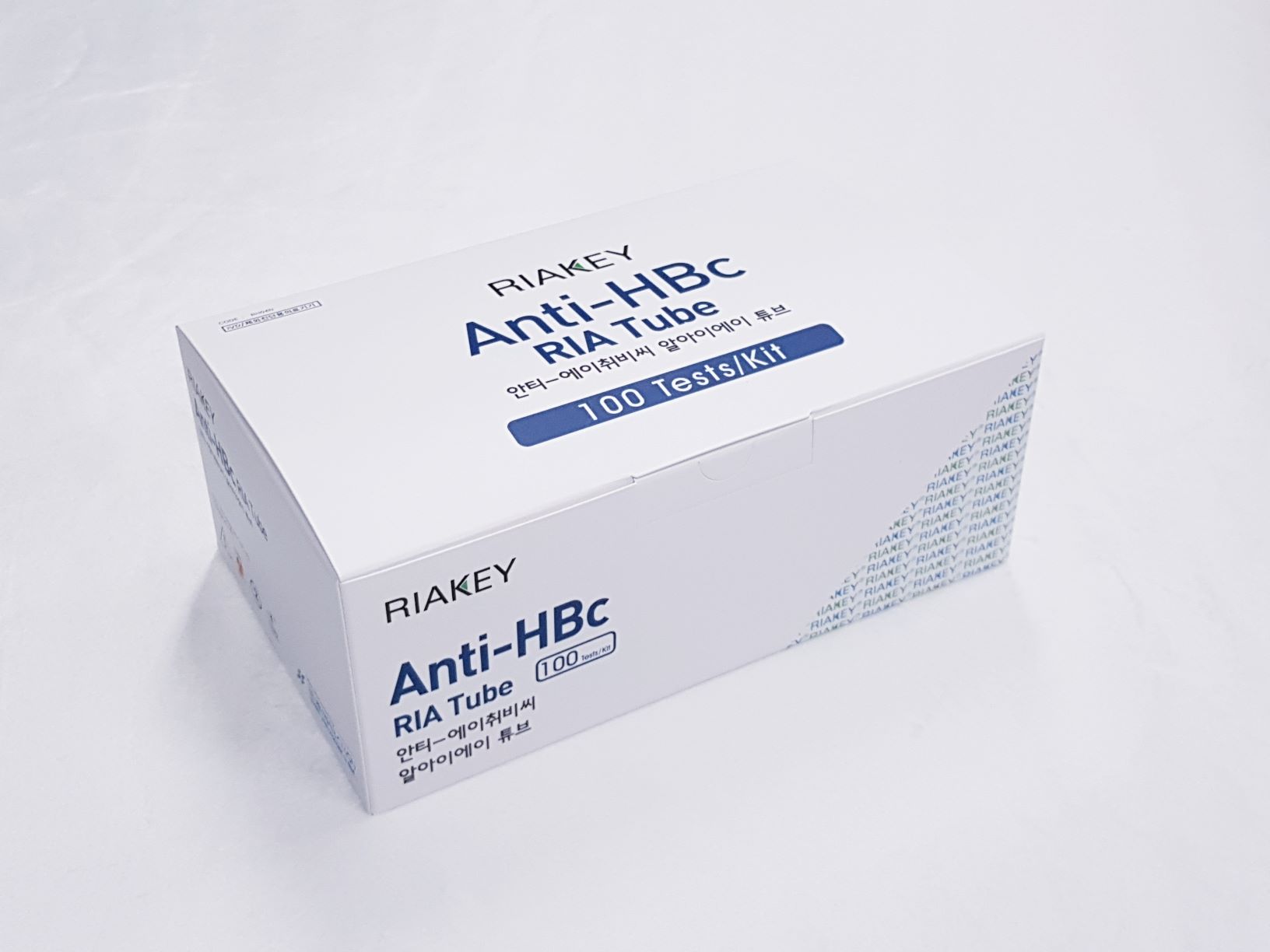Anti-HBc (RIA)
Radioimmunoassay for qualitative determination of Antibody to Hepatitis B core antigen (Anti-HBc) in human serum or plasma
Summary
-
KFDA Registration No
14-3140
-
CAT No
RH04N
-
TEST METHOD
RIA
-
SAMPLE VOLUME
100 ul
-
INCUBATION TIME
120'RT
-
STD RANGE
Qualitative
Download File
Intended Use
Radioimmunoassay for qualitative determination of Antibody to Hepatitis B core antigen (Anti-HBc) in human serum or plasma
INTRODUCTION
In 1965, Dr. Blumberg who was studying hemophilia, found an antibody in two patients which reacted against an antigen from an Australian Aborigine. Later the antigen was found in patients with serum type hepatitis and was initially designated "Australian Antigen". Subsequent study has shown the Australian Antigen to be the hepatitis B surface antigen (HBsAg, HBs Antigen). Initially there appeared to be three particles associated with hepatitis B infection: a large "complete" particle called the "Dane particle", a small circular 22 nm particle and an oblong 42 nm C particle. Further research identified the Dane particle as the hepatitis B virion and the other two particles as excess surface protein. This former terminology is no longer used and the virus is referred to according to its structure. Subsequent association with hepatitis B virus (HBV) led to the development of sensitive, specific markers of HBV infection. During acute and chronic HBV infection, HBsAg is produced in excess amounts, circulating in blood as both 22 nm spherical and tubular particles. HBsAg can be identified in serum 30~60 days after exposure to HBV and persists for variable periods depending on the resolution of the infection. Antibody to HBsAg (anti-HBs) develops after a resolved infection and is responsible for long-term immunity. Anti-HBc develops in both resolved acute infections and chronic HBV infections and persists indefinitely. Immunoglobulin M (IgM) anti-HBc appears early in infection and persists for greater than or equal to 6 months. It is a reliable marker of acute HBV infection. ** Modes of Transmission: Transmission of HBV occurs via percutaneous or permucosal routes, and infective blood or body fluids can be introduced at birth, through sexual contact or by contaminated needles. Infection can also occur in settings of continuous close personal contact (such as in households or among persons in institutions for the developmentally disables), presumably via inapparent or unnoticed contact of infective secretions with skin lesions or mucosal surfaces.
PRINCIPLE OF THE ASSAY
The RIAKEY Anti-HBc RIA Tube is an one step competitive radioimmunoassay (RIA) method to measure specific Anti-HBc IgG in human serum or plasma. Negative controls, positive controls and unknown samples are incubated together with 125I-monoclonal anti-HBc antibody in recombinant HBcAg coated tubes. After incubation the contents of the tubes are removed by a washing step and the bound activity is measured in a gamma counter. The concentration of Anti-HBc is reversely proportionated to the radioactivity measured. The values of unknown samples are read off the calibration curve.
Use Precaution
Be careful when handling all samples, reagents, or devices used in the test as they may be the source of infection.
All reagents, human body samples, etc. are handled at the designated location.
- Do not use mixed reagents from different lots.
- Do not use reagents beyond the expiration date.
- Use distilled water stored in clean container.
- Use an individual disposable tip for each sample and reagent, to prevent the possible cross-contamination among the samples.
- Store the unused coated tubes at 2~8ºC in the appropriate bags with silica gel and accurately sealed.
- If large quantity of assay would be performed at one time, there might be substantial time variation between 60 tubes at one time to minimize time variation. Also, do not exceed 10 minutes for entire pipetting.
- Wear disposable globes while handling the kit reagents and wash hands thoroughly afterwards.
- Do not pipette by mouth.
- Do not smoke, eat or drink in areas where specimens or kit reagents are handle.
- Handle samples, reagents and loboratory equipments used for assy with extreme care, as they may potentially contain infectious agents.
- When samples or reagents happen to be split, wash carefully with a 3% sodium hypochlorite solution.
- Dispose of this cleaning liquid and also such used washing cloth or tissue paper with care, as they may also contain infectious agents.
- Avoid microbial contamination when the reagent vial be eventually opend or the contents be handled.
- Use only for IN VITRO.

